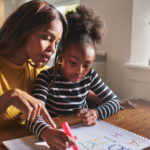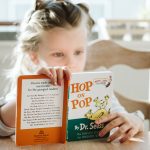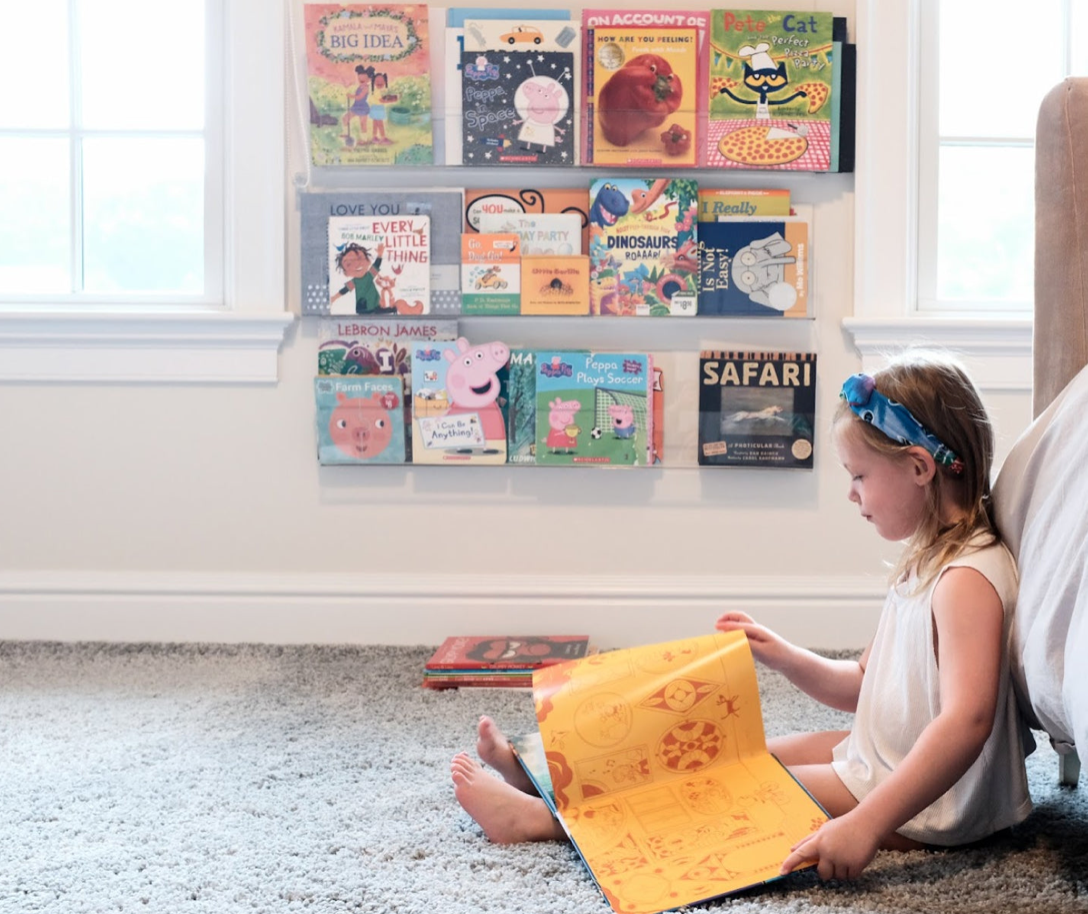
How to Foster a Love of Reading
Interview with Dorie Reisman, the founder of DylPop’s Book Shop, a company dedicated to jump starting in-home libraries nationwide.
By Cris Pearlstein
As a self-proclaimed book nerd, nothing would make me happier than to know my daughter loves reading as much as I do. But passing down a love of books isn’t like passing down your eye color or your stubbornness (both of which she got from my husband, for the record). So how do we foster a love of reading in our children? Dorie Reisman, founder of DylPop’s Book Shop, says incorporating books into your child’s bedtime routine is a good start, but it’s not the only way. Read our full interview for more of Dorie’s advice, book recommendations, and the shocking statistic that started her on the mission to help parents across the country build their in-home libraries.
Q: Tell me a bit about why you started DylPop’s Book Shop. Was there an aha moment that started you on your journey?
On April 1, 2020 my son was born. During the first six months of his life I was, like many parents, in lockdown with my two children. I was set to graduate from my NYU master’s program that summer, so at night I would do research for my thesis paper. It was then that I came across many articles referencing book deserts in the United States—places where students and families had little to no access to literary materials. I reflected on how lucky my family was to have a bounty of books on our shelves during these tough times. In quarantine I used books to help my daughter transition from diapers to underwear, and from only child to sister. We also used books as a means of education about the racial injustices we were seeing on the news and protests we joined on our streets in NYC. It was then that I decided I wanted to help jump start in-home libraries around the country in whatever way that I could. Every child deserves a set of books on their shelves, and every parent deserves access to the powerful conversation tool books offer, too.
Pssst…check out How to Encourage Reading for Pleasure
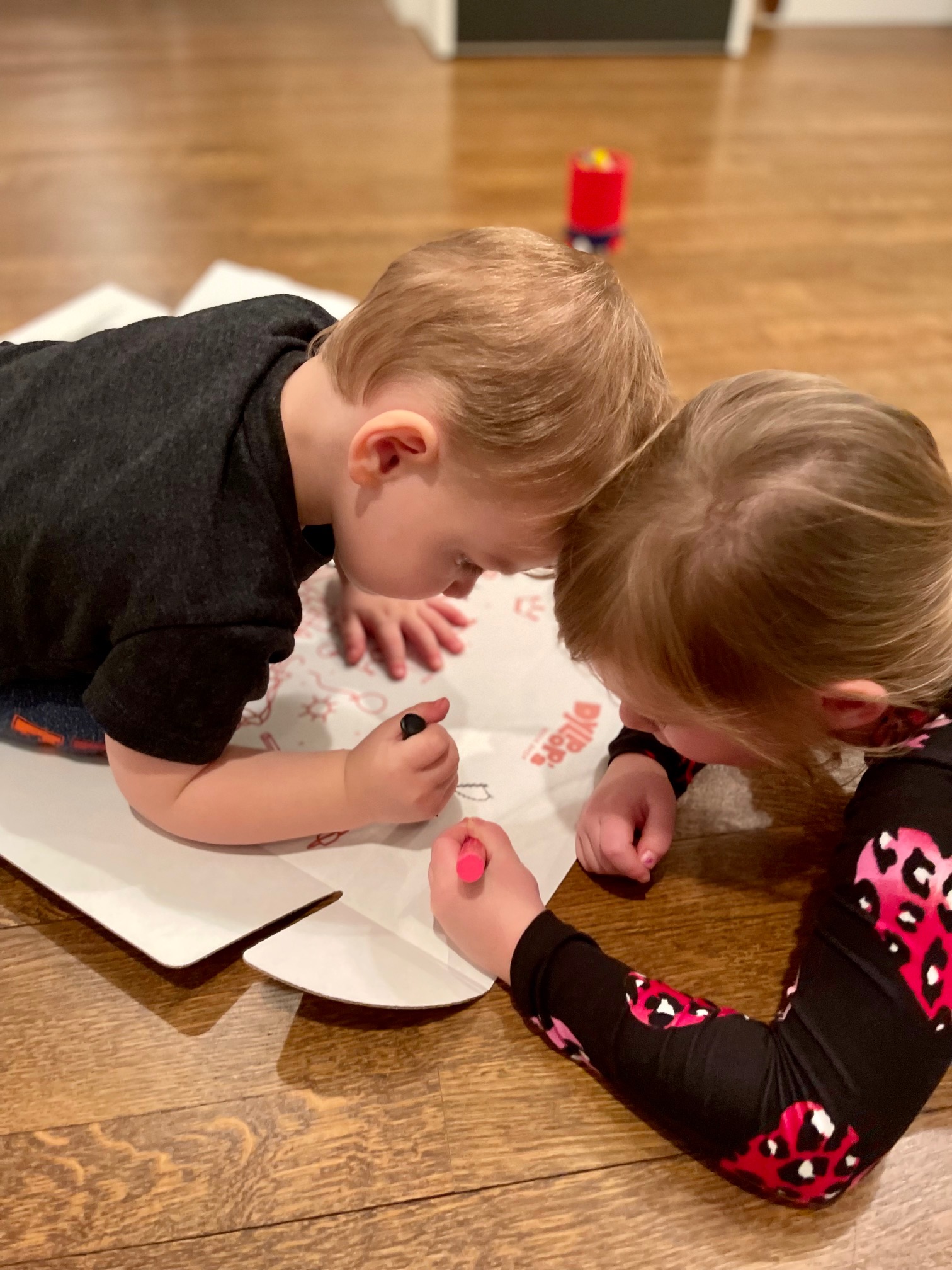
Q: What surprising facts have you learned about kids + books since starting your company?
Before launching this business, I read an article in The Atlantic while researching my thesis titled, “Where Books Are All But Nonexistent.” The opening really struck me. It read, “Forty-five million. That’s how many words a typical child in a white-collar family will hear before age 4. The number is striking, not because it’s a lot of words for such a small human — the vast majority of a person’s neural connections, after all, are formed by age 3 — but because of how it stacks up against a poor kid’s exposure to vocabulary. By the time she’s 4, a child on welfare might only have heard 13 million words.” This is a statistic everyone should know, and everyone should work to change.
Q: What is your advice for soon-to-be parents who are beginning to build a library for their nursery?
Before my daughter was born my husband and I wrote out a list of lessons we hoped to instill in our children. This list has often guided the books we select for our in-home library. Kindness, courage, friendship, acceptance – these are themes we looked for in the books we purchased that first year.
Board books are easier for younger kids to hold because they fit well in little hands and the pages are easier to turn. Some of our favorite board books are, Besos for Baby, Stick and Stone, Goodnight Moon, Brown Bear, Brown Bear, What Do You See?, The Going to Bed Book, Giraffes Can’t Dance, The Feelings Book and Whose Toes Are Those?.
Lastly, they should check out DylPop’s Book Shop and order the Welcome Baby bundle. As your child grows, your library will grow too, and we’ve got you covered for any milestone that may come your way.
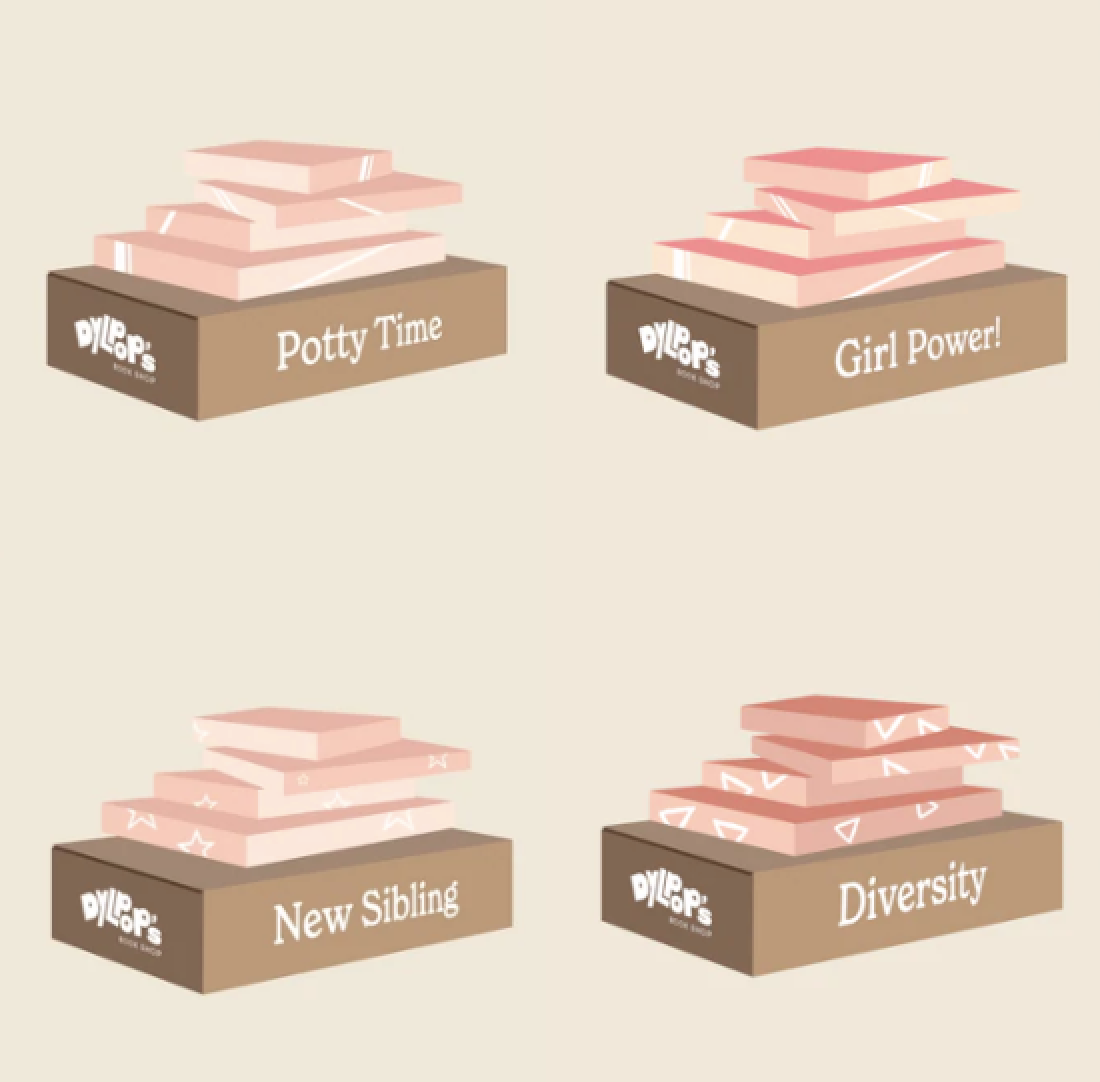
Q: What tips do you have for new parents who want to foster a love of reading and books in their children?
I can only speak to what worked for us. From the moment my daughter was born we read 1-3 books to her at bedtime. Even if we weren’t home to read with her, our notes to any caregiver included books before bedtime. Reading became a comfort activity and also a signal for rest. We adopted a similar routine with my son when he was born a few years later. Both of my children look forward to this time of connection and love reading books with others and alone.
Pssst…check out The Proven Benefits of Reading to Babies
Q: Do you have any practical tips for a parent who is having trouble getting their kid(s) to enjoy stories, books, or reading in general?
Not every child wants to sit still and read books, and that’s ok. First and foremost, I think it’s important to meet children at their starting point to foster a love of reading rather than forcing them into an activity they won’t enjoy. Start slow. Set a reading time within your child’s schedule and let them know when this time will come. Choose one book that’s fairly short or a book that requires reader interaction. Make sure the book is tailored to your kids interests — if your kid loves Paw Patrol, let them read a Paw Patrol book. Even if there is no lesson or meaning behind the story, they’ll start listening. You can also pair a book with a craft or activity if you think that will help your children engage. Over MLK weekend this year we read The Colors of Us to our children and while we read we let the kids mix paints to reflect the different skin tones mentioned in the book. They may have been multitasking, but this actually helped them better absorb the book’s message.
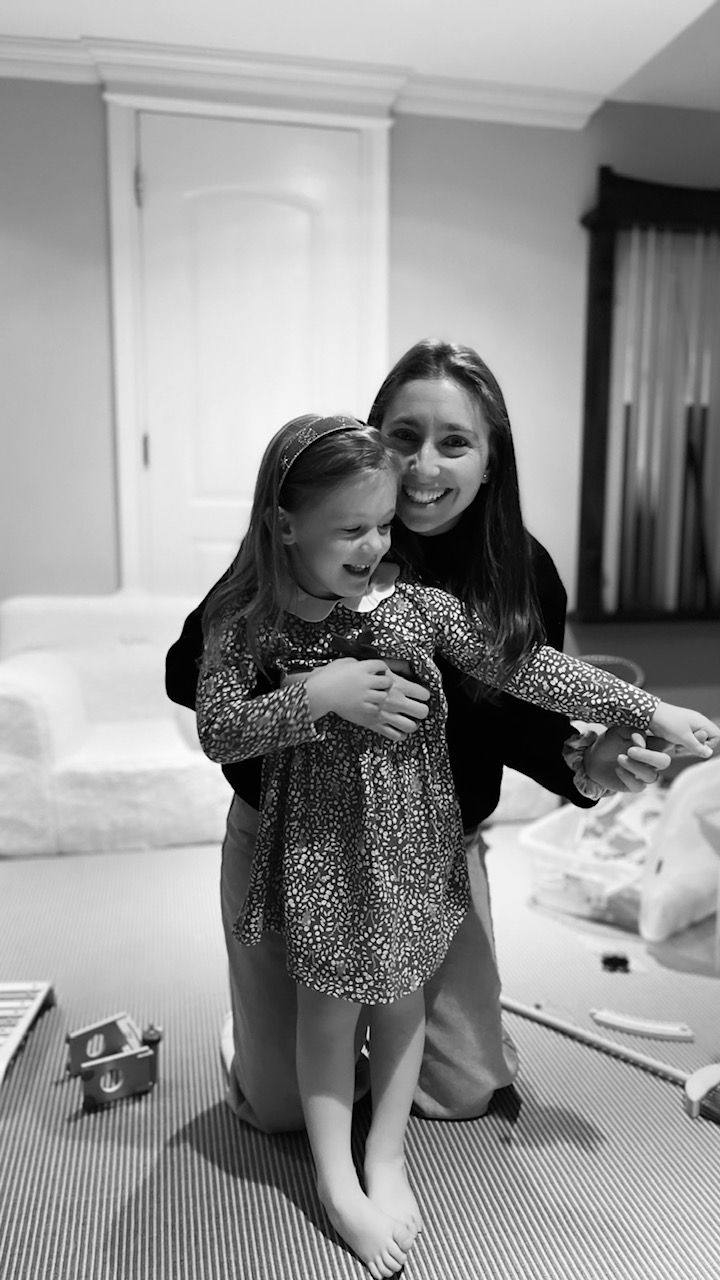
Q: Can you tell us about the reading habits in your house? Do you carve out specific time for reading or does it happen organically?
We have incorporated reading into our bedtime routine since my daughter was born. She has really embraced what comes after reading together, too, where discussion and questions flow naturally. That being said, she also likes to read books to herself and her little brother. She’ll sit flipping through the pages making up her own stories or retelling what she can remember from her favorite books. I love hearing her read to herself. What she says during this time clues me into what she has absorbed from her books.
We also tend to read a few stories during dinner time. My husband will read books to our children while they eat. Since they are still small, this is also a good tactic for keeping them in their chairs long enough to clean most of their plates.
Ultimately, I think it’s important for parents to allocate time to read to their young children. Maybe daily isn’t realistic for all families, but hopefully weekly is a reasonable goal. Not only will this offer an opportunity for parents and children to connect, but it will promote language development, help expand your child’s vocabulary and inspire creativity. It will also foster a love of reading in our children.
Pssst…check out The Fundamentals of Early Reading for Kids
Dorie’s Book List
Inspired to add to your child’s library after reading our interview? See below for some of Dori’s favorite books, perfect for whatever stage your little one is in.
For Babies:
Here We Are: Notes for Living on Planet Earth by Oliver Jeffers: The illustrations are gorgeous, and honestly, all first-time parents who I gift this to call me crying. They are in love with the book and it’s message.
Beautiful Oops! by Barney Saltzberg: This book teaches our children it’s ok to make a mistake in an awesomely artistic and engaging way.
For Toddlers:
Yes! No!: A First Conversation About Consent by Megan Madison, Jessica Ralli and Isabel Roxas: New to our bookshelf, this is meant to be a first conversation about consent. Early experiences with consent will impact our child’s future relationships. We use this book to help jumpstart conversations about boundaries, feelings, empathy, and the ability to ask and listen for “yes.”
Mix It Up! by Hervé Tullet: A whimsical board book that will give your child simple artistic instructions to embark on an interactive journey of the imagination. It’s engaging and fun, which is often all you need from a book!
For Kinder-age Kids:
The Girl with Big, Big Questions by Britney Winn Lee: My brother bought this book for my daughter because she is the queen of asking why. The story reminds children that it’s always important to stay curious, even when your parents can’t find the right answers.
Bodies Are Cool by Tyler Feder: This book provides parents with the chance to open a dialogue about body image, and an opportunity to share encouragement and reassurance that bodies come in all shapes and sizes.
Cris Pearlstein is a writer and mom, who is passionate about living a low-waste lifestyle. She loves her dog, her daughter, and her husband, in that order. And pizza. She really loves pizza. Sign up for her newsletter here.


